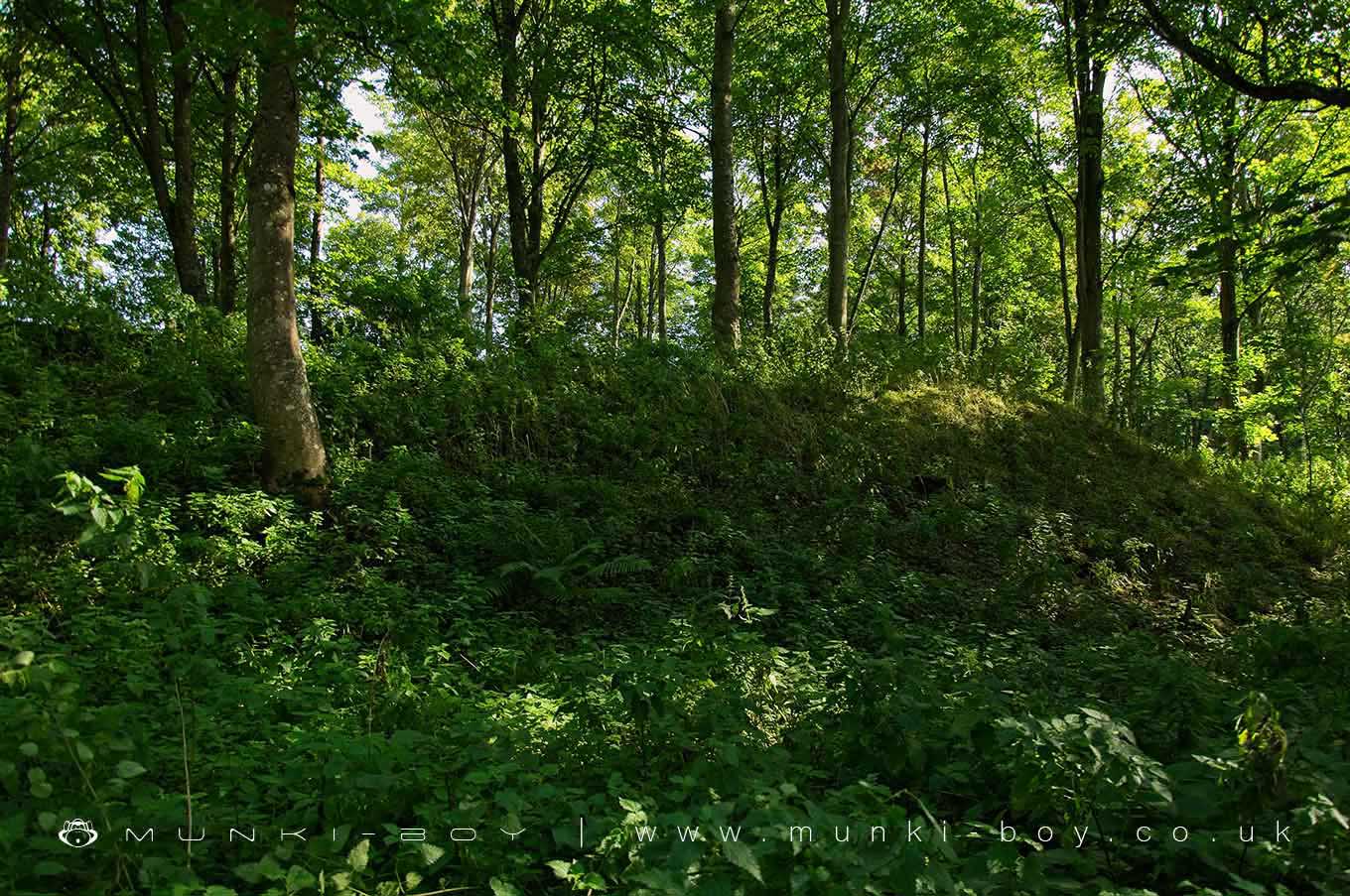Castlesteads (Prehistoric Enclosure)

The monument includes Castlesteads multivallate prehistoric defended enclosure. It is located on a slight knoll in Yanwath Wood overlooking a bend in the River Lowther to the south and east, and includes a roughly circular enclosure partially defended by three ramparts and two ditches. The enclosure measures approximately 53m in diameter and contains internal features which include a cross wall running east-west which virtually divides the interior into two equal halves. In the northern half there are faint traces of other walls together with some shallow circular depressions thought to have been the sites of hut circles. The enclosure has two entrances, one on the northern side, the other directly opposite. Defending the enclosure on its western and much of its southern sides are three earthen ramparts and two ditches; the outer rampart measures c.10m wide by 2m high, the middle rampart measures c.9m wide by 2.5m high, and the inner rampart measures c.6.5m wide by 1.5m high. On the eastern and northern sides a path and a forestry track have partially obliterated the outer and middle ramparts.
During the mid-prehistoric period (seventh to fifth centuries BC) a variety of different types of defensive settlements began to be constructed and occupied in the northern uplands of England. The most obvious sites were hillforts built in prominent locations. In addition to these a range of smaller sites, sometimes with an enclosed area of less than 1ha and defined as defended settlements, were also constructed. Some of these were located on hilltops, others are found in less prominent positions. The enclosing defences were of earthen construction, some sites having a single bank and ditch (univallate), others having more than one (multivallate). At some sites these earthen ramparts represent a second phase of defence, the first having been a timber fence or palisade. Within the enclosure a number of stone or timber-built round houses were occupied by the inhabitants. Stock may also have been kept in these houses, especially during the cold winter months, or in enclosed yards outside them. The communities occupying these sites were probably single family groups, the defended settlements being used as farmsteads. Construction and use of this type of site extended over several centuries, possibly through to the early Romano-British period (mid to late first century AD). Defended settlements are a rare monument type. They were an important element of the later prehistoric settlement pattern of the northern uplands and are important for any study of the developing use of fortified settlements during this period. All well-preserved examples are believed to be of national importance.
Despite partial obliteration of the defences on the northern and eastern side of the monument, Castlesteads prehistoric defended settlement survives reasonably well, its earthworks in particular remaining largely well preserved where they survive. It overlooks the valley of the River Lowther, a tributary of the Eden, and lies in an area where rich agricultural soils supported a considerable prehistoric and Romano-British population from Neolithic times onwards. The monument will contribute to any further study of early settlement patterns in the area.
RSM
Castlesteads (Prehistoric Enclosure) Postcode:
England > Cumbria > Westmorland and Furness > Askham > Castlesteads (Prehistoric Enclosure)
